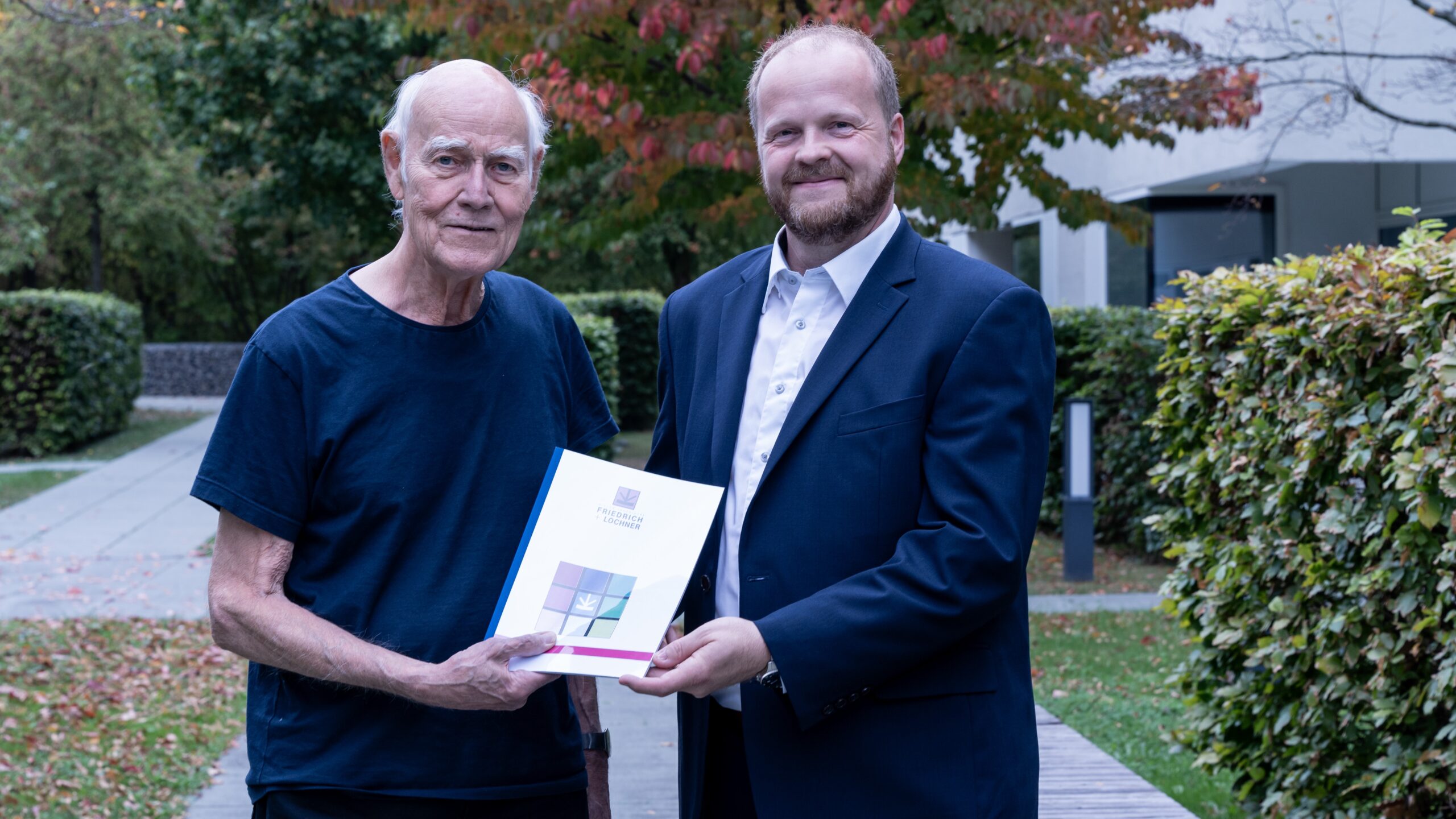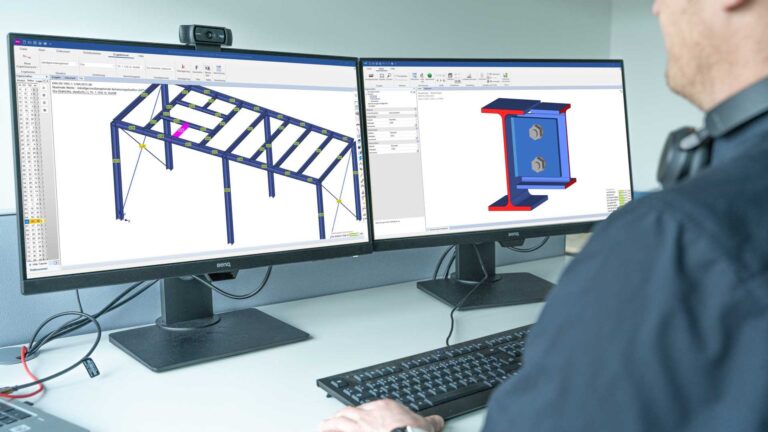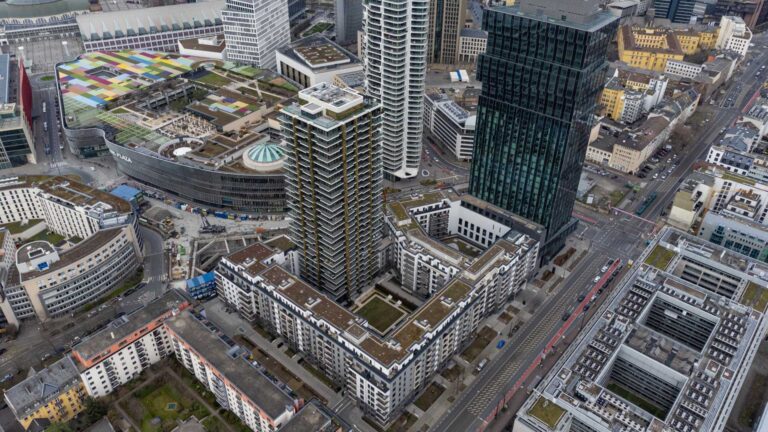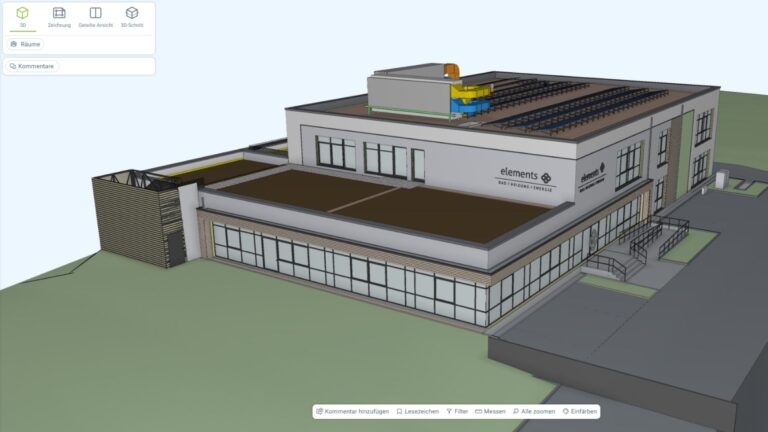45 years of FRILO | "For me there was only Friedrich + Lochner"

October 27, 1978 is considered the birth of FRILO Software GmbH. Not too many software companies can look back on 45 successful years. How the two founders succeeded in developing FRILO from a start-up into a successful, medium-sized company is the subject of an interview with co-founder Jens Friedrich. Together with the current Managing Director Markus Gallenberger, he looks back on the past years and provides insights into how it all began 45 years ago.
Good afternoon Mr. Friedrich, good afternoon Mr. Gallenberger. FRILO is celebrating its 45th anniversary. What does this milestone mean to both of you?
Friedrich: I look back on it with pleasure. It’s nice that FRILO has lasted so long, is still holding on, and is still growing. That is a nice feeling.
Gallenberger:45 years is indeed a milestone. There are countless companies in the software industry that have not been able to survive on the market for so long. In this respect, it is something special to look back on 45 successful years. I am proud to be part of this success and this team.
Mr. Friedrich, together with co-founder Norbert Lochner, you seized the opportunity at the end of the 1970s and developed the first programs for structural calculations. Can you still remember how it all began?
Friedrich: Yes, I can still remember that very well. To be precise, it all started back in 1972 with the Olympic Games in Munich. The University of Stuttgart was very intensively involved in the construction projects. It was a highly exciting time for civil engineers because numerous new ideas were tried out and developed. For example, the tent roof construction of the Olympic Stadium was developed by the university’s leading professors around the architect Frei Otto. At the same time, John Argyris was teaching as a professor of statics at the University of Stuttgart. An ingenious mind, he is considered a co-founder of the finite element method and thus paved the way for innovative structural calculations. A luminary in his field who also taught in New York and London, Argyris attracted many interested students to Stuttgart. It was an exciting time.
How did Norbert Lochner and you find each other during this time?
Friedrich: At the time, we were both looking for work and found what we were looking for at Meissner + Wurst, a supplier of ventilation systems in the 1970s. The Stuttgart-based company needed someone to calculate static verifications of components in nuclear power plants. That’s how we got to know each other.
What motivated two young engineers at the time to develop static calculation programs?
Friedrich: As engineers, we always had to do complex testing work when we were employed by Meissner + Wurst. Since there were no static calculation programs at that time, we were looking for a way to automate the same calculation process over and over again. So we developed our first calculation program ourselves with the collar beam roof D5. We spent many nights in our own cellar. When the program was finished in 1978, we boarded the night train to Hamburg to present it to interested engineers the next day in the BDB office community.
How did you feel after presenting your program to a wide audience for the first time?
Friedrich: We felt super awesome. And Hamburg was just the beginning. We drove all over Germany and visited various trade shows. One thing led to another and it became apparent that we had created a demand with our market innovation.
Gallenberger: It takes a lot of courage to take the first step in a direction and believe in yourself.
Mr. Friedrich, you were Managing Director of FRILO for 23 years. During this time, you have developed FRILO from a two-man workshop into a successful, medium-sized company. How did you manage that?
Friedrich: With a lot of work. For me, there was only Friedrich + Lochner. In terms of personnel, we grew continuously. More and more colleagues joined us from the University of Stuttgart and later from the TU Dresden, who helped us solve our customers’ problems.
Gallenberger: I think that’s what makes the difference. When the start-up becomes a passion and all your heart and soul goes into it, then it becomes something great. You have also done pioneering work. I’m sure many people wanted to be a part of that.
FRILO’s growth also includes the opening of the second office in Dresden. How did this come about?
Friedrich: The foundation for this was laid by the loosening up of the economy in what was then East Germany. The students at the University of Dresden had a natural urge to go to CeBIT. Some of our later colleagues came to our booth there and then to Stuttgart for job interviews. A colleague once said: “In the morning I got on the train in Leipzig and in the evening I signed my employment contract in Stuttgart. After a few years, almost the entire team from the Institute of Building Materials Science at the TU Dresden came to us. That’s when we realized that we needed a domicile on site so that our colleagues didn’t have to change their place of residence.
Some colleagues who started with you back then are still part of the FRILO team today. How is that for you?
Friedrich: That fills me with pride and is one reason for our success. We have always valued the performance of our employees. The business result was and is the result of our workforce.
So appreciation has always been important to you! What other principles did you place particular emphasis on in managing the company and in your day-to-day business?
Friedrich: We introduced a morning coffee break very early on. There, all colleagues came together and exchanged ideas. This gave the team the opportunity to talk about our programs in a relaxed atmosphere. There was a sense of human warmth in the team, and this was also expressed in the development of the programs.
Gallenberger: This tradition is still an integral part of our Dresden office today. Colleagues still meet there at ten in the morning for breakfast and coffee together. The conversations are not always just about work. Nevertheless, I am convinced that innovation can only come about when people come together and exchange ideas. Due to the increased team size and FRILO’s various office locations, these coffee meetings now take the form of company outings or all-hands meetings.
Mr. Gallenberger, you took over from Hans Stegmüller as Managing Director in 2018. What do you appreciate about the legacy left to you by your two predecessors?
Gallenberger: I particularly appreciate the solid foundation laid by my predecessors. The team I took over was very experienced and at the same time open to ideas for realignment in some business areas.
As you have already mentioned, FRILO was already on a sound footing before you took over. In the five years of your tenure, however, FRILO has once again grown strongly. To what do you attribute the success of the last few years?
Gallenberger: First and foremost, on the solid foundation of experienced colleagues already mentioned. In recent years, we have also been able to attract many young talents to FRILO who have brought a breath of fresh air to the company. It’s the mix of experience and innovative spirit that makes the difference. The team size has doubled in the past five years in order to grow solidly and stably with our customers with greater human capital. Despite the growth, family togetherness is still important to us. We move together as a team in the same direction and make sure to adjust the speed of the steps. Because: Before I can crawl, I can’t walk. And before I can walk, I can’t run.
Mr. Friedrich, you retired from operational business many years ago. How do you assess the development of the company you once founded from a distance?
Friedrich: Great! I can only congratulate you on that. With all this success, I think it’s great that the hotline is still there. We set it up back then because we felt that our customers were entitled to technical support as a free service.
Gallenberger: Our customers appreciate this high-quality service. We provide support not only for program errors, but also for calculations. We are a reliable partner who is there when our customers need us.
Is there an event that has particularly stuck in your memory?
Friedrich: At a construction trade show many decades ago, a competitor came up to me who was much more established than FRILO and said to me: Mr. Friedrich, you’ve done it. I will never forget this praise.
Mr. Gallenberger, let’s also look ahead: How do you see FRILO equipped for the future?
Gallenberger: Through the merger to form Nemetschek Engineering with SCIA and DC-Software, we are solidly positioned and are taking the right path. Our customers confirm us in this conviction. We offer various solutions, have a broad portfolio and can thus respond to the challenges of engineering offices and support them with the appropriate tool. The success of our customers is what drives us.
If each of you had one wish for FRILO: What would it be?
Friedrich: Sometimes I wish that the path we’ve taken could be taken a little more slowly. In my opinion, there is no need for greater speed.
Gallenberger: I would like it to continue like this. Maybe a little faster in some areas, because whether it can really be slower, I don’t know. The speed at which the digitized and globalized world is changing has increased. We have to move with the times, otherwise we will be left behind. We want to become the market leader in Europe with custom-fit software solutions for engineers.




